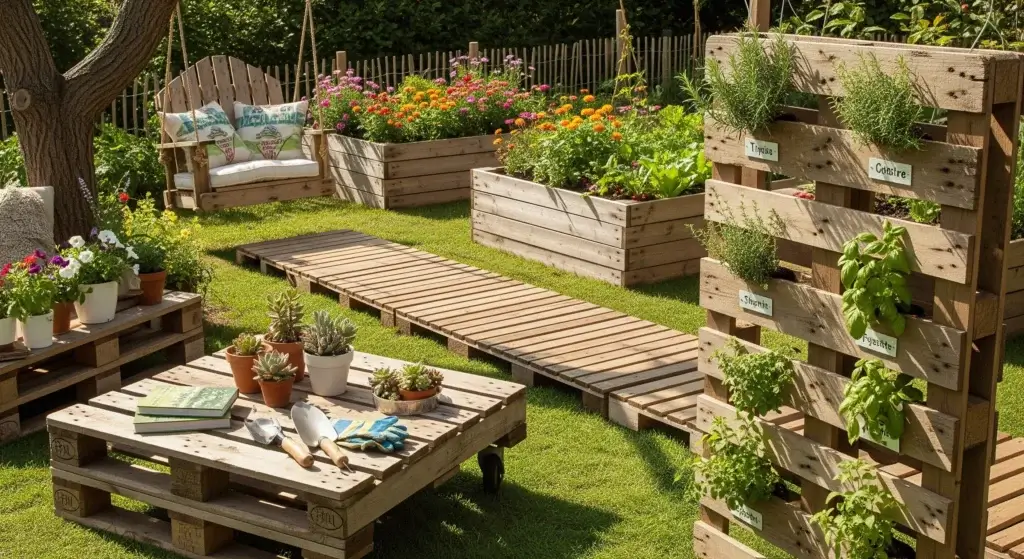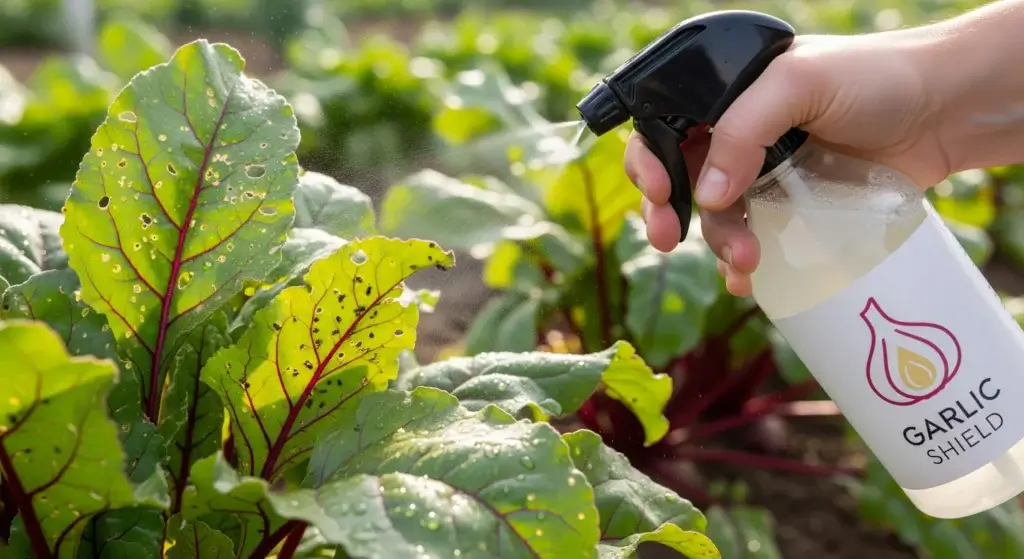
Creating a DIY cactus terrarium is a fun and rewarding project that adds a unique touch to your indoor décor.
Terrariums are perfect for showcasing the beauty of cacti in a small, manageable space.
Plus, they’re low-maintenance and an excellent way to bring nature indoors.
In this guide, we’ll walk you through the process of building your own cactus terrarium, from choosing the right container to layering the materials and adding decorative elements.
Choosing the Right Container
The first step in creating a cactus terrarium is picking the right container.
Your choice of container affects both how your terrarium looks and how healthy your cacti will be.
Here’s what to consider:
- Size: Make sure the container is spacious enough for all the cacti you plan to plant, leaving a bit of room for them to grow.
- Material: Glass containers are a popular option because they let you see the different layers of your terrarium, giving it a clean and elegant appearance.
- Open or closed?: For cacti, an open container is best. Since cacti thrive in dry environments, an open top allows for better airflow, preventing moisture buildup, which can lead to rot.
There are many options to choose from: mason jars, fishbowls, glass bowls, or even old vases can work well.
If you’re going for a rustic vibe, a repurposed wooden box with a glass lid can add a unique touch.
- Read also: A Step-by-Step Guide to Crafting Your Own DIY Plant Terrarium
- Read also: A Comprehensive Guide – DIY Plant Pot From Clay
Preparing the Container
Once you’ve chosen your container, the next step is to clean it.
This is important because you want to avoid introducing any mold or bacteria that could harm your plants.
Simply wash the container with warm, soapy water, rinse it thoroughly, and let it dry completely.
A clean container gives your cacti the best chance to thrive in their new environment.
By selecting the right container and prepping it properly, you’re setting the foundation for a healthy, eye-catching cactus terrarium.

Layering the Terrarium
The key to a successful cactus terrarium lies in properly layering the materials.
Each layer has a specific purpose, from drainage to nutrient supply.
Layer 1: Stones and charcoal
Start with a layer of small stones or pebbles at the bottom of your container, about 1-2 inches thick.
Since your terrarium won’t have drainage holes like a regular plant pot, this layer acts as a drainage system.
It prevents excess water from sitting at the bottom, which could lead to root rot—a common problem for cacti if they get too much water.
Next, sprinkle a thin layer of activated charcoal on top of the stones.
This charcoal helps keep the terrarium fresh by filtering the air and absorbing impurities, odors, or toxins in the water.
It’s especially important for closed terrariums, but even in an open one, it adds an extra layer of protection against bacteria and mold.
Layer 2: Moss
On top of the charcoal, add a layer of moss. Moss acts as a barrier, preventing the soil from falling into the stone layer.
It also helps retain a bit of moisture, balancing out the dry conditions that cacti prefer.
Additionally, moss adds a soft, natural touch that makes the terrarium look visually appealing.
Layer 3: Soil
The most crucial layer is the soil.
For cacti, you need a special cactus or succulent soil mix, as regular potting soil holds too much moisture.
Cacti thrive in soil that drains quickly and doesn’t stay soggy, so look for a mix that includes sand or perlite.
These ingredients help water flow through easily and prevent the roots from sitting in damp conditions.
Add a 2-3 inch layer of this well-draining soil on top of the moss, and gently press it down to remove any air pockets.
This gives your cacti a sturdy base to root into and helps avoid water retention, which is key to keeping your plants healthy.
Layer 4: Sand (optional)
For an extra decorative element, consider adding a thin layer of natural or colored sand on top of the soil.
This creates a beautiful desert-like look, enhancing the overall aesthetic of the terrarium.
While this layer isn’t essential for the plants, it’s a great way to add a finishing touch and make your terrarium visually striking.

Adding Decorative Elements
Now comes the fun part! Once the soil is in place, it’s time to plant your cacti and add any decorative elements.
Here’s how to go about it:
Planting the cacti
Start by making small holes in the soil where you want each cactus to go.
Carefully remove your cacti from their nursery pots and place them into the holes you’ve made.
Be sure to handle the cacti gently—those spines can be sharp!
To protect your hands, use gloves or even a pair of tongs to help guide the plants into place.
Adding decorative elements
This is where you can really get creative!
Once the cacti are planted, you can begin decorating your terrarium with a variety of natural or artistic elements.
Small rocks, pebbles, or even miniature figurines can add a playful or elegant touch.
Some popular choices include tiny pieces of driftwood, seashells, or even crystals to give your terrarium a touch of natural beauty.
Watering and Maintenance
Cacti are incredibly low-maintenance plants, which is one of the reasons they’re so popular for terrariums.
However, they still need a little care to thrive.
Watering
Cacti thrive in dry conditions, so they don’t need a lot of water.
In fact, one of the most common mistakes people make with cactus terrariums is overwatering.
The key is to water sparingly—typically once every 2 to 4 weeks, depending on how dry the environment is.
Make sure the soil is completely dry before watering again.
Since the terrarium doesn’t have drainage holes like a regular plant pot, it’s especially important to avoid overwatering, as this can lead to root rot.
Light
Cacti love sunlight, but it’s important to get the right kind of light.
Place your terrarium in a spot where it can get plenty of indirect sunlight.
Too much direct sunlight shining through the glass can make the terrarium heat up quickly, which could harm your cacti.
So, try to find a balance—bright but indirect light is ideal.
Pruning and maintenance
Although cacti are slow-growing, you might need to do some light pruning to remove dead leaves or tidy up the terrarium.
This keeps your display looking neat and healthy.
Maintenance is minimal with cacti, but occasional care will help your terrarium stay fresh and beautiful.

- Read also: Hang it High: Crafting DIY Plant Hangers with Rope
- Read also: DIY Plant Pots Ideas: A Creative Guide to Enhancing Your Garden
Final Thoughts
Creating your own DIY cactus terrarium is a rewarding project that lets you bring a piece of nature indoors.
Not only are terrariums beautiful and customizable, but they also require little maintenance.
By carefully layering your container with the right materials, selecting the perfect decorative elements, and following a light watering schedule, your cactus terrarium will thrive for years to come.
FAQs
It’s not recommended. Cacti need dry conditions and good airflow, so an open container is ideal to prevent moisture buildup and rot.
Use a well-draining cactus or succulent soil mix. Regular potting soil retains too much moisture, which can cause root rot.
You can, but be careful to choose plants with similar watering and light needs, such as succulents. Avoid plants that require high humidity, as they won’t thrive in the same environment as cacti.
While it’s possible, it’s easier to plant small cacti that are already established. Growing cacti from seeds requires more care and time.



